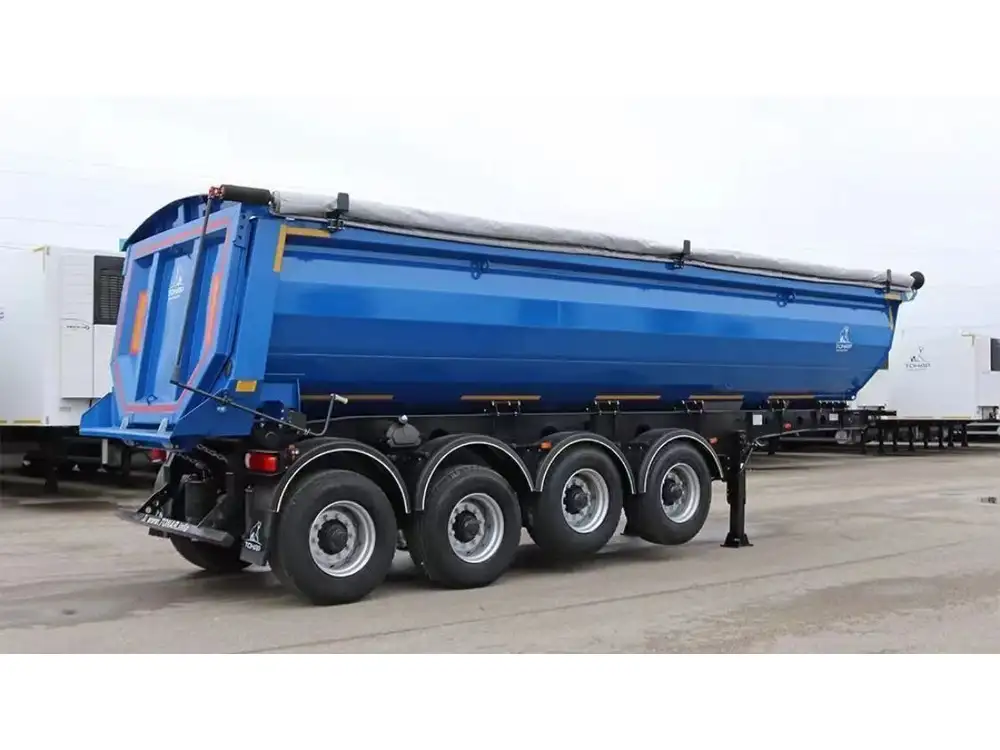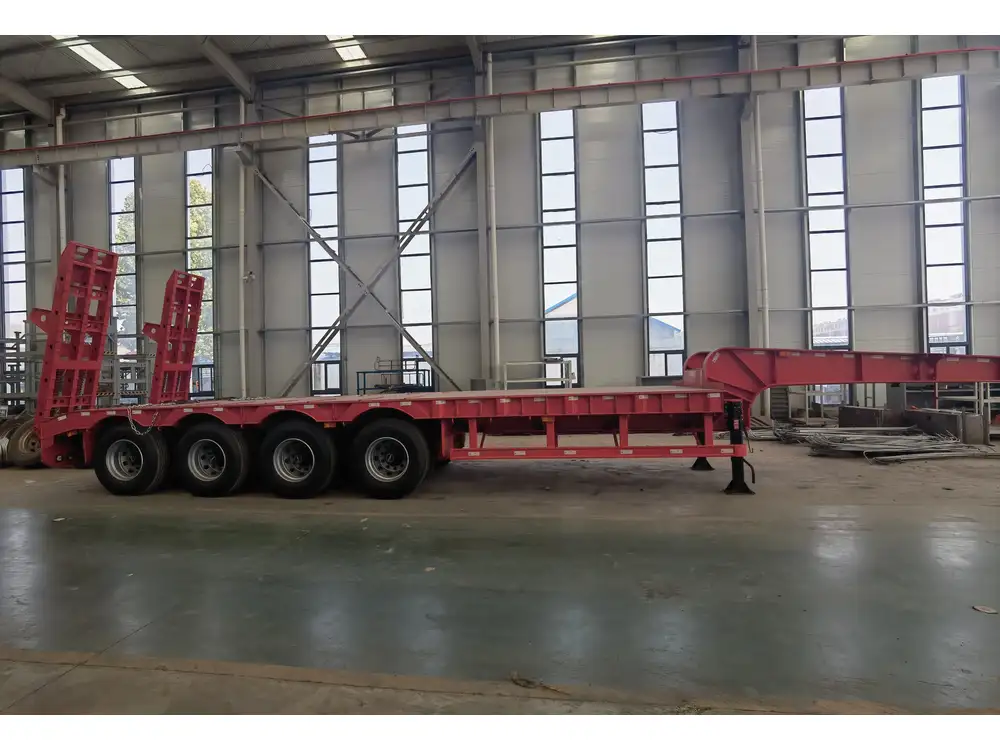Car carrier trailers are essential tools within the automotive transportation industry. As the demand for vehicle transport continues to grow, understanding the specifications and capacities of these trailers becomes paramount for operators, manufacturers, and logistics professionals alike. One of the most pressing questions when considering a car carrier trailer is: How many cars can a car carrier trailer hold?
The Capacity of Car Carrier Trailers
Car carrier trailers, also known as auto transport trailers, come in various designs and configurations, each optimized for specific types of vehicle transport. The capacity of these trailers can largely depend on factors such as:
- Trailer Configuration: The design and number of decks.
- Vehicle Size: The dimensions and weight of the vehicles being transported.
- Regulations and Safety Standards: Local laws that dictate how many vehicles can be transported simultaneously.
1. Types of Car Carrier Trailers
The primary types of car carrier trailers include:
| Type | Description | Typical Capacity |
|---|---|---|
| Open Car Carrier | Open transport for multiple vehicles, usually on two levels. | 5 to 10 cars depending on size |
| Enclosed Car Carrier | Protects vehicles from the elements, often used for luxury or vintage cars. | 2 to 6 cars |
| Single Car Trailer | Designed for transporting one car, typically used for high-end vehicles. | 1 car |

2. Open Car Carrier Trailers
Open car carriers are the most common type. They can accommodate a wide range of vehicle sizes and are often used for transporting standard and mid-range vehicles.
- Typical Capacity: An open car carrier can typically hold 5 to 10 cars on average, depending on their dimensions and weight.
- Double Deck Configuration: This configuration allows for more vehicles to be transported, with the upper deck height-adjusted to fit standard vehicles.
Example Scenario:
Consider a standard open car carrier that has a maximum length of 53 feet. It can accommodate vehicles with an average length of 15 feet. If we evenly distribute the length, you could potentially fit up to 6 vehicles on the trailer while considering safety regulations and space for maneuvering.
3. Enclosed Car Carrier Trailers
Enclosed car carriers are utilized when vehicle protection from weather and road debris is paramount. These are particularly favored for high-value cars, classic vehicles, and exotic transports.
- Typical Capacity: Enclosed carriers can typically hold 2 to 6 vehicles, with the upper limit reached only with smaller vehicles or vehicles that can be stacked appropriately.
- Load Height Limitations: Enclosed carriers often have a lower ceiling height, limiting how many vehicles can be stacked without risking damage.

Example Scenario:
An enclosed trailer with a length of 28 feet can typically fit either a couple of larger vehicles like SUVs or up to 4 compact cars. Leveraging the vertical space is crucial for maximizing capacity in these trailers.
Factors Influencing Capacity
When determining the number of vehicles a car carrier trailer can hold, several additional factors come into play:
1. Vehicle Size and Weight
The physical dimensions of vehicles significantly affect how many can fit in a given space.
- Standard Sedans: Typically around 15-16 feet in length.
- SUVs and Trucks: Generally measure between 18-22 feet.
- Compact Cars: Often only 12-14 feet long.
The weight also matters – most car carriers must adhere to weight regulations to avoid penalties and ensure safety.

2. Classification and Regulations
Regulatory agencies have guidelines concerning load weight and distribution. In the United States, for example, the Federal Highway Administration outlines maximum payload capacities.
- Pivoting and Weight Distribution: Proper load balancing is essential to ensure that trailers don’t exceed the recommended gross vehicle weight rating (GVWR).
Comparative Overview: Capacity by Trailer Type
To better illustrate the differences in car capacity across trailer types, consider the following table:
| Trailer Type | Max Vehicles | Notes |
|---|---|---|
| Open Car Carrier | 5-10 | Allows for stacking and has no roof barrier. |
| Enclosed Car Carrier | 2-6 | Offers protection but has weight and size limitations. |
| Single Car Trailer | 1 | Ideal for high-end or luxury vehicles. |
Transporting Different Types of Vehicles
Understanding the types of vehicles being transported can also affect how many can fit on a trailer.

1. Sedans and Compact Cars
Given their smaller dimensions, conventional sedans and compact cars can be stacked effectively, leading to a higher average:
- Example: An open car carrier may fit up to 8 compact cars, depending on unloading efficiency and safety regulations.
2. SUVs and Pickup Trucks
These larger vehicles take up more space and can reduce the total number a trailer can hold:
- Example: A standard open car carrier might only be able to carry 5 SUVs, limiting the number based on weight distribution.
3. High-End and Classic Vehicles
For enclosed carriers, the focus shifts from capacity to protection:
- Example: An enclosed trailer may only fit 2-3 high-end vehicles but provides a climate-controlled and secure environment.

Operational Considerations for Fleet Managers
Fleet managers must take several operational aspects into account when deciding on the specifications of car carrier trailers, including:
1. Cost Efficiency
Calculate the balance between the number of vehicles transported and operational costs, including fuel and maintenance.
2. Route Optimization
Understanding traffic patterns, load weights, and destination delivery can maximize efficiency. Using software tools can help with optimizing routes tailored for car carrier trailers.

3. Customer Needs
Offering flexible transportation solutions that meet various clients’ needs, from budget-sensitive scenarios to high-value shipments, is crucial.
Conclusion: Choosing the Right Car Carrier Trailer
Understanding the question, “How many cars can a car carrier trailer hold?”, encompasses various factors—trailer type, vehicle size, regulations, and operational needs.
- For those looking to maximize capacity without compromising safety and efficiency, opting for an open car carrier is often the best choice.
- Enclosed car carriers, while limited in capacity, provide essential protection for high-value vehicles, whereas single trailers are perfect for specialized collections.
Ultimately, the choice of a car carrier trailer must align with both operational goals and specific transport needs, ensuring that every vehicle reaches its destination safely and efficiently. A well-informed calculation regarding capacity can lead to substantial savings in logistics and enhanced service quality for customers, making it a critical consideration for anyone in the vehicle transportation sector.
By considering the various factors outlined, anyone in the market for a car carrier trailer will be better equipped to make an informed decision, ensuring operational efficiency and vehicle safety.



